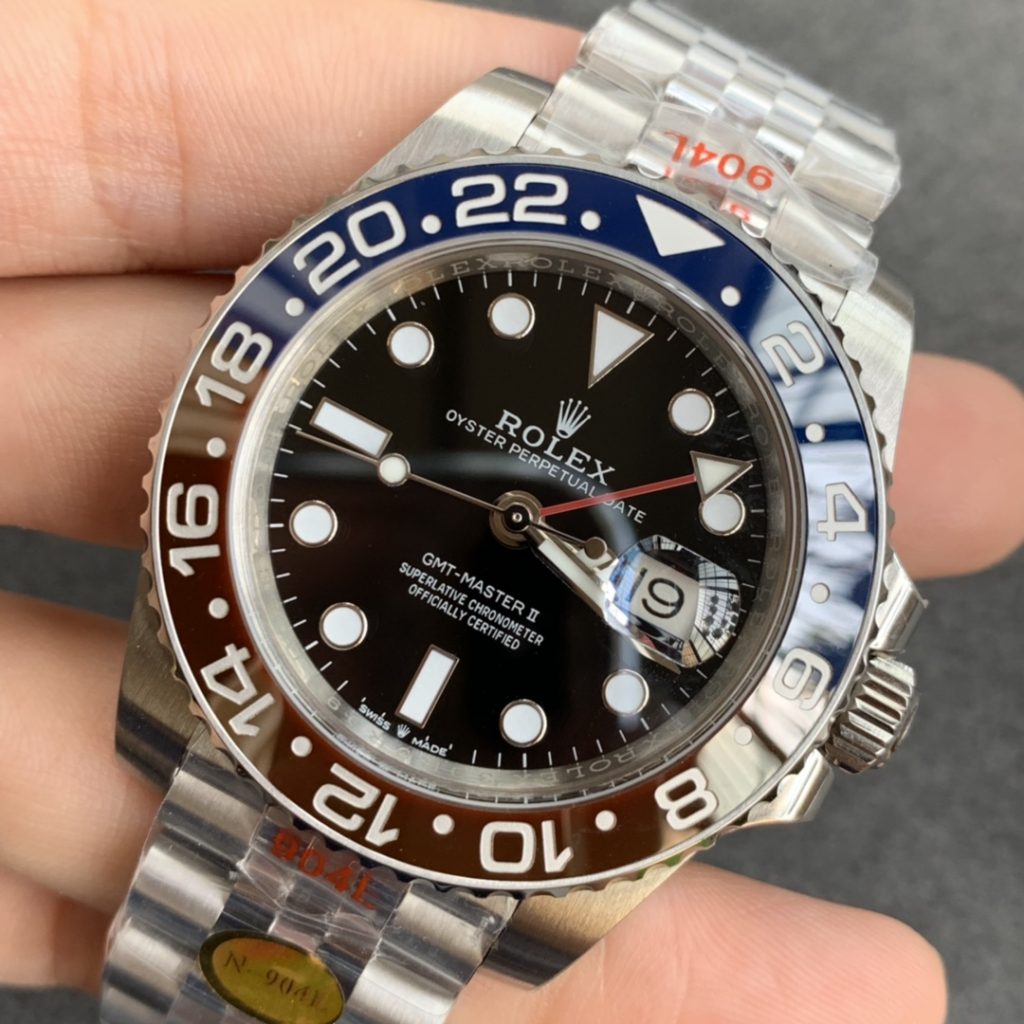

Unlike the Datejust, the Jubilee bracelet for the GMT-Master II does not have the Oysterclasp folding clasp but instead uses the Oysterlock folding clasp (which is usual for sports models, with an additional safety bar). The bracelet and case are both made of saltwater-resistant stainless steel 904L, which Rolex calls “Oystersteel.” Closing, Locking, Extending Thanks to its curved links, the Oyster bracelet felt just as supple and comfortable. The small links fit snugly against the wrist and did not pull fine hairs. We found the Jubilee bracelet to be very comfortable to wear. Like the Oyster bracelet on the earlier GMT-Master II, the center links are polished while the outer links have a brushed finish. Rolex developed the Jubilee bracelet in 1945 for the Datejust, and the GMT-Master has been available with this bracelet option since 1959. But whether this is a consolation to owners of the white-gold version is debatable, since the multi-linked Jubilee bracelet has a more elegant appearance than the three-row Oyster one. So as not to be confused with the more expensive white-gold Pepsi, the steel Pepsi is the first Rolex sports watch that has a five-piece-link Jubilee bracelet, previously reserved for Datejust models. In 2018, Rolex responded to its customers’ desires and again issued the Pepsi in steel. The price of over $40,000 was too high for many fans of steel Rolex sports watches. This very popular GMT-Master II in steel became known as “Batman.” In 2014, Rolex was able to create the desired red color, and the company reintroduced the beloved red-and-blue Pepsi bezel – on a white-gold watch. In 2013, Rolex solved one of these problems and the first two-tone ceramic scale appeared – in blue and black. At that time, a two-color bezel made of ceramic appeared to be technically impossible, and the color red could not be created satisfactorily in this high-tech material. But then, when it introduced a ceramic bezel on steel versions of the GMT-Master II, it became necessary to shelve the Pepsi. Rolex modified the Pepsi very cautiously until 2007. In addition to having the aura of a pilots’ watch, the high level of recognition of the colored bezel contributed to the GMT-Master’s popularity. And the increased number of flights also increased the demand for watches with a second time zone. At the time, new jet airliners made intercontinental flights shorter and more popular. This and other specs for the watch came from Pan American Airways, at whose request this model was created. Although the manufacturer made a version that had a GMT bezel in red and black, called “Coke,” the first GMT-Master from 1955 bore the red-and-blue scale for the 24-hour display and was nicknamed “Pepsi.” The Pepsi GMT-Master II represents the reincarnation of the classic in its original form.Īt first, the colors were used to distinguish between the day and night times of the second time zone. But there’s only one right answer if you’re talking about the Rolex GMT-Master.

Coke or Pepsi? It’s a matter of taste, some say, and individual tastes always differ.


 0 kommentar(er)
0 kommentar(er)
